new posts in all blogs
Viewing: Blog Posts Tagged with: promoting diversity, Most Recent at Top [Help]
Results 1 - 5 of 5
How to use this Page
You are viewing the most recent posts tagged with the words: promoting diversity in the JacketFlap blog reader. What is a tag? Think of a tag as a keyword or category label. Tags can both help you find posts on JacketFlap.com as well as provide an easy way for you to "remember" and classify posts for later recall. Try adding a tag yourself by clicking "Add a tag" below a post's header. Scroll down through the list of Recent Posts in the left column and click on a post title that sounds interesting. You can view all posts from a specific blog by clicking the Blog name in the right column, or you can click a 'More Posts from this Blog' link in any individual post.

By:
Hannah,
on 5/22/2014
Blog:
The Open Book
(
Login to Add to MyJacketFlap)
JacketFlap tags:
Educator Resources,
checklist,
diversity in the classroom,
promoting diversity,
diverse books,
Diversity, Race, and Representation,
resources,
Add a tag
It’s not easy to create an inclusive book collection. Whether you’re a librarian creating a collection for an entire community, a teacher creating a collection for your classroom, or a parent creating a collection for your children, choosing books that reflect the diversity of human experience can be a challenging job.
That’s because creating a diverse book collection is about more than just making sure X, Y, and Z are represented. It’s not a matter of ticking off check boxes or making sure quotas are filled. For those committed to doing it right, building a diverse book collection requires contemplation, research, and awareness. But the rewards are great: a truly diverse collection of books can turn children into lifelong readers and promote empathy, understanding, and self-confidence.
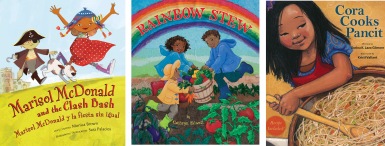
To make things a little easier, we’ve created a checklist to help.
Here are eight steps to all-inclusive reading:
- Does your book list or collection include books with characters of color? LGBTQ? Differently-abled?
- Does it include books with a main character of color? LGBTQ? Differently-abled?
- Does it include books written or illustrated by a person of color? Of different nationalities, religions or sexual preference?
- Are there any books with a person of color on the cover? Do the characters on the book covers accurately reflect the characters in the book?
- Think about your student population. Does your list provide a mix of “mirror” books and “window” books for your students—books in which they can see themselves reflected and books in which they can learn about others?
- Think about the subject matter of your diverse books. Do all your books featuring black characters focus on slavery? Do all your books about Latino characters focus on immigration? Are all your LGBTQ books coming out stories?
- Do you have any books featuring diverse characters that are not primarily about race or prejudice?
- Consider your classic books, both fiction and nonfiction. Do any contain hurtful racial or ethnic stereotypes , or images (e.g. Little House on the Prairie or The Indian in the Cupboard)? If so, how will you address those stereotypes with students? Have you included another book that provides a more accurate depiction of the same culture?
If the answer to any of these questions is no, here are some resources that can help:
Where can I find great diverse children’s books? A resource list
Beyond Good Intentions: Selecting Multicultural Literature
Seven Ways to Explore Race in the Classroom
How inclusive is my classroom library? A Toolkit
Disability in KidLit
I’m Here, I’m Queer, What the Hell Do I Read?
American Indians in Children’s Literature
Diversity in YA
What questions would you add? What resources would you recommend? As always, leave ‘em in the comments!
Filed under:
Diversity, Race, and Representation,
Educator Resources Tagged:
checklist,
diverse books,
diversity in the classroom,
promoting diversity,
resources 


By:
keilinh,
on 3/12/2013
Blog:
The Open Book
(
Login to Add to MyJacketFlap)
JacketFlap tags:
writing contests,
diversity,
guest blogger,
Science Fiction/Fantasy,
Power of Words,
Musings & Ponderings,
Race issues,
Tu Books,
Teens/YA,
promoting diversity,
New Visions Award,
Add a tag
 In January we announced the finalists of our first New Visions Award, a new writing award for a debut author of color for a middle grade or young adult science fiction, fantasy, or mystery novel. Over the last few weeks, we’ve highlighted these talented finalists on our blog as they answer questions about what inspires them, the writing process, and more. Perhaps among these five finalists you’ll find your next favorite author!
In January we announced the finalists of our first New Visions Award, a new writing award for a debut author of color for a middle grade or young adult science fiction, fantasy, or mystery novel. Over the last few weeks, we’ve highlighted these talented finalists on our blog as they answer questions about what inspires them, the writing process, and more. Perhaps among these five finalists you’ll find your next favorite author!
Previously, our New Visions finalists shared their experiences as young readers, and whether they saw themselves represented in books.
In this last post, they share their final thoughts on diversity in genre fiction for middle grade and young adult readers:
Ailynn Knox-Collins
I applaud the efforts that publishers like Tu Books are making to bring diversity into children’s lite rature. I am humbled and grateful to have been given a small part to play here. I may not ever be published but I will always be writing and will most certainly be a reader for the rest of my life. As a teacher of children from all over the world, I am excited to introduce them to a new stage of diversity in books, where they may find themselves reflected in the stories.
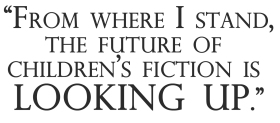 From where I stand, the future of children’s fiction is looking up. They will see more and more books where the covers feature people like them, of all races and creeds, beliefs and lifestyles. Everyone will have a chance to be a hero and every reader will find a place for themselves in the thrilling worlds of mystery, fantasy and science fiction. I can’t hide the huge smile on my face because the child in me is thrilled. I am so proud to be a part of this movement. I hope more writers of color will be encouraged to write from their cultural backgrounds and enrich the book world with new ideas. It wouldn’t surprise me that although the names and settings have been changed, in the end, we’ll discover that there is much that we share with each other; that we have more in common than we realize.
From where I stand, the future of children’s fiction is looking up. They will see more and more books where the covers feature people like them, of all races and creeds, beliefs and lifestyles. Everyone will have a chance to be a hero and every reader will find a place for themselves in the thrilling worlds of mystery, fantasy and science fiction. I can’t hide the huge smile on my face because the child in me is thrilled. I am so proud to be a part of this movement. I hope more writers of color will be encouraged to write from their cultural backgrounds and enrich the book world with new ideas. It wouldn’t surprise me that although the names and settings have been changed, in the end, we’ll discover that there is much that we share with each other; that we have more in common than we realize.
Valynne E. Maetani
Somewhere out there are children just like me. They use reading as a way to escape life’s obstacles. They enjoy being sucked into magical worlds that challenge their imaginations. Sometimes books help them realize their problems are not as bad as they seem. They realize through characters that difficulties are a part of the human experience, but there are others like them who feel and react the same way they do.
In other ways, those same children might be not like me. They are children who might know little about Japan and its foods or customs. They may not have any idea what’s it’s like to grow up Japanese-American or understand how deep-rooted our traditions are.
For all children, books are a way of making connections and allowing them to experience something new. Diversity in middle grade and young adult literature enriches the reading experience by increasing the breadth and depth of what our children have access to, and because of this, there is also an increased chance for children to connect and learn. Both characters and authors of color can provide an introduction to unique perspectives. I find that most intolerance stems from a lack of understanding, and books are one forum which can equip children with information. I’m not naïve enough to think diversity in genre fiction will change everything, but every time we connect with a child, we open doors, and that makes writing worth it.
Rahul Kanakia
In any discussion of diversity, the shadow constituency is white people. Obviously, it’s really nice for teens of color to see depictions of themselves in the media that they consume. But unless those depictions also appeal in some way to white people, then those depictions will not get the major play 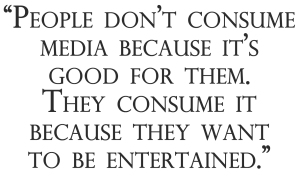 that they need in order to be published and widely distributed in a way that makes sure they get into the hands of people of color.
that they need in order to be published and widely distributed in a way that makes sure they get into the hands of people of color.
And, of course, we all know that it’s good for white people to see the diversity of the world. But that also doesn’t matter. People don’t consume media because it’s good for them. They consume it because they want to be entertained.
So the challenge is to create depictions of PoC that are also entertaining to white people. It’s hard. And it’s often a bit unsatisfying. Writing for an outsider audience means including explanations and “authentic” detail that insiders don’t necessarily need, or want, to see. And if you veer too much in that direction, then you alienate people of your own culture. And that alienation can often be good business, actually, because those people are actually just a tiny fraction of your audience and in terms of getting fame and book sales it makes a lot more sense to feed the preferences of a white audience that hungers for PoC characters who hang around in this tiny sweet spot where they’re alien enough to be picturesque but also relatable enough that they don’t pose a serious challenge to majority culture.
Akwaeke Emezi
I’m curious about what effect it would have had on me as a child and young adult to have had access to more fiction with characters that looked like me, or that came from cultures that I could have related to with more ease. I’ll never know, but I believe that kids nowadays should definitely have access to all that material and I am grateful for all those who are working to make this happen.
Disclaimer- I’m not very immersed in the writer world so this conversation is somewhat new to me. However, it seems to me that diversity in genre fiction (or the lack thereof) is essentially a race issue- who is considered the default race and the limited range of cultures, descriptions, etc that spring forth from that. It’s just not representative of the real world and it does people and children of color a disservice. Stories help people relate to whatever they’re reading about- I had no problem as a child believing that pixies lived in my compound or imagining that the tree in our backyard was The Faraway Tree even though all Enid Blyton characters were white. All children (all people, actually) would benefit greatly from having access to diverse fiction and being exposed to different cultures and people.
Ibi Zoboi
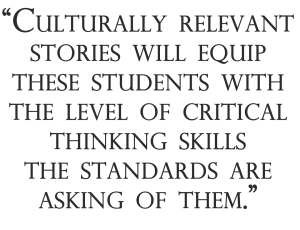 I teach in New York City public schools as a writer-in-residence. So I have a pretty good idea of what inner city children and teens are dealing with in terms of literacy. These new Common Core Learning Standards are asking students to read broadly and deeply—more informational nonfiction texts. And part of my job entails listening to teachers complain how this is a huge leap for many of their students. They’re being asked to argue these complex ideas and think critically, yet they have very little sense of themselves, their world and their place in it.
I teach in New York City public schools as a writer-in-residence. So I have a pretty good idea of what inner city children and teens are dealing with in terms of literacy. These new Common Core Learning Standards are asking students to read broadly and deeply—more informational nonfiction texts. And part of my job entails listening to teachers complain how this is a huge leap for many of their students. They’re being asked to argue these complex ideas and think critically, yet they have very little sense of themselves, their world and their place in it.
When I teach fiction in places like Brooklyn and the Bronx, I’d get so many blue-eyed, blonde-haired characters in these stories you’d think we were in Norman Rockwell’s America. They’re emulating what they have to read. Reading the classics is a good thing. But culturally relevant stories will equip these students with the level of critical thinking skills the standards are asking of them. A great number of sci-fi classics can be paired with well-written YA dystopian novels, for example. And what if they can see themselves and their culture in these books? Orwell’s 1984 then becomes that much more relevant.
Underrepresented students who experience school closures, substandard housing, and violence need to be able to think critically about a genre MG or YA novel and how it relates to them. They need to see themselves taking center stage in heroic stories before they can begin to affect change in their own communities.
Further Reading:
Meet Our New Visions Finalists I: How we got involved in the New Visions Award
Meet Our New Visions Finalists II: How we got involved in the New Visions Award
Meet Our New Visions Finalists III: Writing for people of different backgrounds
Meet Our New Vision Finalists IV: Your relationship to books as a young reader
Filed under:
guest blogger,
Musings & Ponderings,
Tu Books Tagged:
diversity,
New Visions Award,
Power of Words,
promoting diversity,
Race issues,
Science Fiction/Fantasy,
Teens/YA,
Tu Books,
writing contests 


By:
Amanda,
on 3/5/2013
Blog:
The Open Book
(
Login to Add to MyJacketFlap)
JacketFlap tags:
Awards,
writing contests,
diversity,
guest blogger,
Science Fiction/Fantasy,
Power of Words,
Musings & Ponderings,
Race issues,
Tu Books,
Teens/YA,
promoting diversity,
New Visions Award,
Add a tag
 In January we announced the finalists of our first New Visions Award, a new writing award for a debut author of color for a middle grade or young adult science fiction, fantasy, or mystery novel. Over the next few weeks, we’ll be highlighting these talented finalists on our blog as they answer questions about what inspires them, the writing process, and more. Perhaps among these five finalists you’ll find your next favorite author!
In January we announced the finalists of our first New Visions Award, a new writing award for a debut author of color for a middle grade or young adult science fiction, fantasy, or mystery novel. Over the next few weeks, we’ll be highlighting these talented finalists on our blog as they answer questions about what inspires them, the writing process, and more. Perhaps among these five finalists you’ll find your next favorite author!
Previous posts by our New Visions finalists:
Q: What was your relationship to books and reading as a child or teenager? In what ways did you see yourself represented in books?
Ailynn Knox-Collins
I was seven when I attended my first boarding school. Determined to hate the experience, I succeeded at being miserable. Over the next few years, I changed school six times. I was always the new kid, but I wasn’t the nice one. I got into fights, defied teachers and even started a gang to beat up boys (I didn’t actually beat up anyone). Adults whispered about me when they thought I wasn’t listening. I was the poor child whose parents were getting a divorce. Because of that, I got away with everything which just made me more miserable.
Then one day, a teacher introduced me to CS Lewis and his worlds brought a spark into my self-imposed misery. Books became my escape. I devoured every story, mostly fantasy at first. I began to write as well, putting myself in places where I could be somewhere or someone else. Meeting Austen, Hardy and the Bronte sisters began my love affair with classical English literature. Those were wonderful years. Finally, Asimov came along and that opened the world of science fiction to me. Life became hopeful even while aliens were invading and snatching bodies, because the heroes always triumphed. And that’s where I kept seeing myself, whether or not the characters looked like me or spoke like me. They came out on top at the end and in my darkest moments, that was what I needed the most.
Ibi Zoboi
I was one of those statistical kids who did not own books. My mother worked two jobs to send me to Catholic school and we lived in a part of Brooklyn where little girls did not skip to the library on their own. We did own encyclopedias, though, but not novels and picture books. This had more to do with culture rather than economics. For students in Haiti, reading was more for rote memorization of textbooks. That’s what my mother made me do with the encyclopedias.
I was dealing with some  serious identity issues by the time I got to high school. We’d moved to suburban Queens and I went to a mostly white Catholic high school. I desperately wanted mirror stories but I’d settled on having some sort of movie star idol instead. Halle Berry was just starting out then and she had starred in the TV movie Alex Haley’s Queen. That’s what led me to reading the actual book. Then I read Alex Haley’s Roots and looked for other titles in that section of my high school’s library—slave narratives (which at some point led me to Octavia Butler’s Kindred). Then I got mad at the world and worked in a bookstore all throughout college and read everything I could afford on my employee discount (RIP Waldenbooks).
serious identity issues by the time I got to high school. We’d moved to suburban Queens and I went to a mostly white Catholic high school. I desperately wanted mirror stories but I’d settled on having some sort of movie star idol instead. Halle Berry was just starting out then and she had starred in the TV movie Alex Haley’s Queen. That’s what led me to reading the actual book. Then I read Alex Haley’s Roots and looked for other titles in that section of my high school’s library—slave narratives (which at some point led me to Octavia Butler’s Kindred). Then I got mad at the world and worked in a bookstore all throughout college and read everything I could afford on my employee discount (RIP Waldenbooks).
It all started with wanting to see an image of beauty and success that was real to me. Halle’s hair was short and she was black and she’d been a heroine. I don’t think I would’ve been so superficial if I’d seen some of those images in books as a child.
Rahul Kanakia
My mom gave me Isaac Asimov’s Foundation when I was around 10 years old. She’d first read it as a kid in Mumbai in the 1960s. I loved the book’s thought-provoking premise and epic scope and I knew that I wanted more of that. Until I went to college, I only read science fiction and fantasy novels: mostly hard science fiction, space operas, military SF, epic fantasy, and swords and sorcery.
All of these subgenres are largely comprised of adventure stories. They’re about heroes who triumph over tremendous obstacles. And, because I read hundreds and hundreds of these books, I wanted to grow up and become a hero. Many SF fans of color go through a period of disillusionment when they realize that the genre doesn’t care to represent them. That did not happen to me. For whatever reason, I had no trouble identifying with the square-jawed white protagonists.
My disillusionment arose when I realized that heroism is a bit of a sham. It doesn’t exist in real life. Or, at least, not in the way that they write about it in the stories. Of course, everyone realizes that eventually. And, after growing up, some people are still able to find value in the metaphor: the hero represents some spiritual transcendence or state of striving. But I was never able to get over my disappointment. To this day, I find it difficult to read a traditionally-structured SF novel.
Valynne E. Maetani
In the third grade, I skipped recess so that I could read a series of non-fiction books. Each detailed the life of someone famous in history. Only one of those books was about a woman: Marie Curie.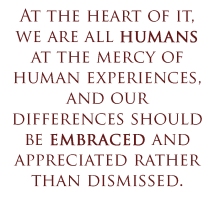 Shewas smart and brave, and I wondered if I could ever be like her. Often, my father would surprise me with books. Each had strong female characters like those in Little Women or The Good Earth. In our Asian culture, where emotions are rarely exposed, this was his way of telling me that he believed I could be brave and strong like Madame Curie, the March women, or O-Lan.
Shewas smart and brave, and I wondered if I could ever be like her. Often, my father would surprise me with books. Each had strong female characters like those in Little Women or The Good Earth. In our Asian culture, where emotions are rarely exposed, this was his way of telling me that he believed I could be brave and strong like Madame Curie, the March women, or O-Lan.
At some point, I fell in love with mysteries, devouring Encyclopedia Brown and eventually books by Agatha Christie. Yet I realized there were rarely characters of color. So a few years ago I decided to write a book for my youngest sister’s eighteenth birthday. I had a vague idea of the storyline but knew it would be a mystery; the protagonist would be a strong young woman; and she and her family would be Japanese. What I wanted to share through my writing is that as much as we try to fit in with those around us, we will always be different. I realized, once I was older, that being different is the precise thing my friends loved about me and my family. At the heart of it, we are all humans at the mercy of human experiences, and our differences should be embraced and appreciated rather than dismissed.
Akwaeke Emezi
My relationship to reading has always been a huge part of my life and luckily, both my parents were avid readers who happily loaded me up with books. I read everything I could find; my favorites were authors like Lewis Carroll, Kipling, James Herriot, Enid Blyton, C.S. Lewis, J.K. Rowling, etc. I also rea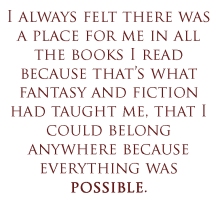 d several classics as a child/teen simply because they were in my house and I needed things to read: Anna Karenina, Crime and Punishment, The Odyssey, A Tale of Two Cities, etc. I remember reading Flowers in the Attic before I was ten…that was quite an experience!
d several classics as a child/teen simply because they were in my house and I needed things to read: Anna Karenina, Crime and Punishment, The Odyssey, A Tale of Two Cities, etc. I remember reading Flowers in the Attic before I was ten…that was quite an experience!
I was always reading at the dinner table, at school while on break, by candlelight because the power was always out, in the bathroom- I was insatiable and churned through books quickly. We had an outdoor book market at the Post Office in my town in Nigeria, where you could bring second hand books and swap them out for more, which was a great resource.
As a child/teen, I always felt there was a place for me in all the books I read because that’s what fantasy and fiction had taught me, that I could belong anywhere because everything was possible.
Further Reading:
Meet Our New Visions Finalists I
Meet Our New Visions Finalists II
Meet Our New Visions Finalists III
Filed under:
Awards,
guest blogger,
Musings & Ponderings,
Tu Books Tagged:
diversity,
New Visions Award,
Power of Words,
promoting diversity,
Race issues,
Science Fiction/Fantasy,
Teens/YA,
writing contests 

 Calling all aspiring authors! We are thrilled to announce the establishment of the New Visions Award, which will be given to a middle grade or young adult fantasy, science fiction, or mystery novel by a writer of color. Established by Lee & Low’s fantasy, science fiction and mystery imprint, Tu Books, the award is a fantastic chance for new authors of color to break into the world of speculative fiction, a genre that would benefit greatly from more diversity.
Calling all aspiring authors! We are thrilled to announce the establishment of the New Visions Award, which will be given to a middle grade or young adult fantasy, science fiction, or mystery novel by a writer of color. Established by Lee & Low’s fantasy, science fiction and mystery imprint, Tu Books, the award is a fantastic chance for new authors of color to break into the world of speculative fiction, a genre that would benefit greatly from more diversity.
The New Visions Award is modeled after Lee & Low’s successful New Voices Award, which was established in 2000 and is given annually to a picture book written by an unpublished author of color. This award has led to the publication of several award-winning children’s books, including Bird by Zetta Elliott and Sixteen Years in Sixteen Seconds by Paula Yoo. Paula shares her experience of winning:
Winning the 2003 Lee & Low NEW VOICES Award was an incredible honor. It not only jump-started my book writing career, but it also provided a wider audience with the story of my non-fiction book’s subject – Dr. Sammy Lee, the first Asian American to win a Gold Medal at the Olympics.
It is our hope that the New Visions Award will help new authors begin long and successful careers writing speculative fiction, and will bring new stories to readers of the science fiction, fantasy, and mystery genres.
Manuscripts will be accepted now through October 30, 2012. The winner of the New Visions Award will receive a grant of $1000 and our standard publication contract. An Honor Award winner will receive a cash grant of $500. For further details, including eligibility guidelines and submission guidelines please visit the New Visions Award page.
If you have any questions about submissions, eligibility, or anything else, feel free to drop them in the comments and we’ll try to answer them. And please spread the word to any aspiring authors you know who might be interested. We look forward to reading your entries!
Filed under:
Awards,
Tu Books Tagged:
diversity,
New Visions Award,
New Voices Award,
promoting diversity,
Tu Books 

We’ve got some exciting news to share: LEE & LOW BOOKS has acquired multicultural children’s book publisher Children’s Book Press.

From the press release: January 26, 2012—Continuing to expand despite a difficult economy, LEE & LOW BOOKS, an independent publisher of high quality books for children that focuses on diversity, announced today that it has acquired the assets of Children’s Book Press. Founded in 1975, Children’s Book Press, based in San Francisco, was the first specialty publisher of multicultural children’s books in the United States. With this addition LEE & LOW BOOKS becomes one of the largest independent multicultural children’s publishers in the country with over 650-titles in print. “This is a tremendous honor for us to keep the prestigious collection of Children’s Book Press alive, and have the opportunity to build on its 36-year history,” said Jason Low, Publisher of LEE & LOW BOOKS.
Children’s Book Press and LEE & LOW BOOKS share similar missions of promoting diversity through the publication of books for young readers. In 2010, LEE & LOW BOOKS, founded in 1991 with a focus on illustrated books for the K-6 market, expanded its range to the young adult market through the launch of Tu Books, an imprint for science fiction, fantasy, and mystery novels. Children’s Book Press will maintain its own identity as a separate imprint of LEE & LOW BOOKS, joining Tu Books and its firmly established educational arm, Bebop Books.
“Creating continuity for the mission of Children’s Book Press is important to us, since its commitment to diversity was so groundbreaking,” notes Jason Low. “Children’s Book Press started the trend of featuring people of color in the pages of books—before this, the reading experience was exclusively white.”
So, there you have it, folks. We’re excited to keep growing, and thankful for you, our readers, who have allowed us to do so.
Filed under:
Bellringers,
Book News,
Publishing 101 Tagged:
diversity,
promoting diversity,
young adult market 




![]()













I have always loved Children’s Book Press and Lee and Low! Barefoot Books is another wonderful publisher focusing on folktales from people all over the globe! As the mother of a little guy with a genetic syndrome and physical disability, it is so lovely to have books featuring kids wearing leg braces, using wheelchairs, and a story about a little boy who is a bit different written by a woman whose brother has autism. This small, independent publisher has been publishing beautiful books for twenty years and should definitely be on your go-to list for your home or classroom library!